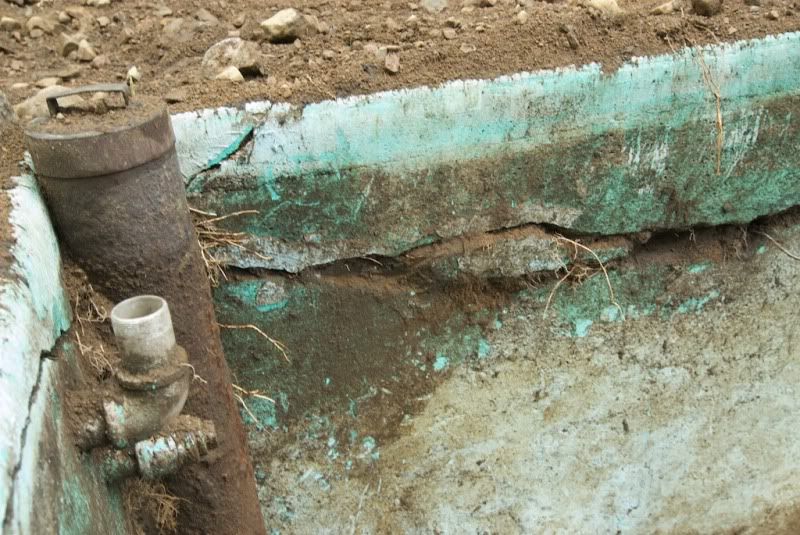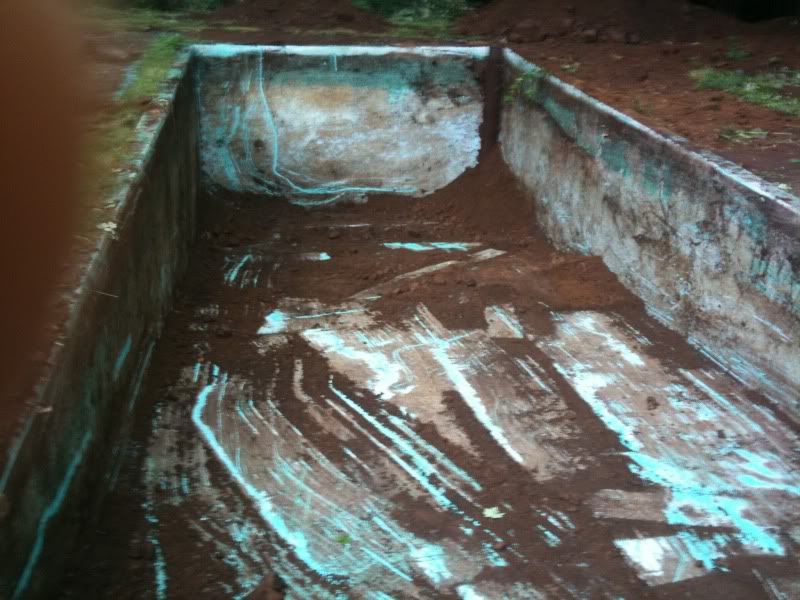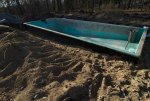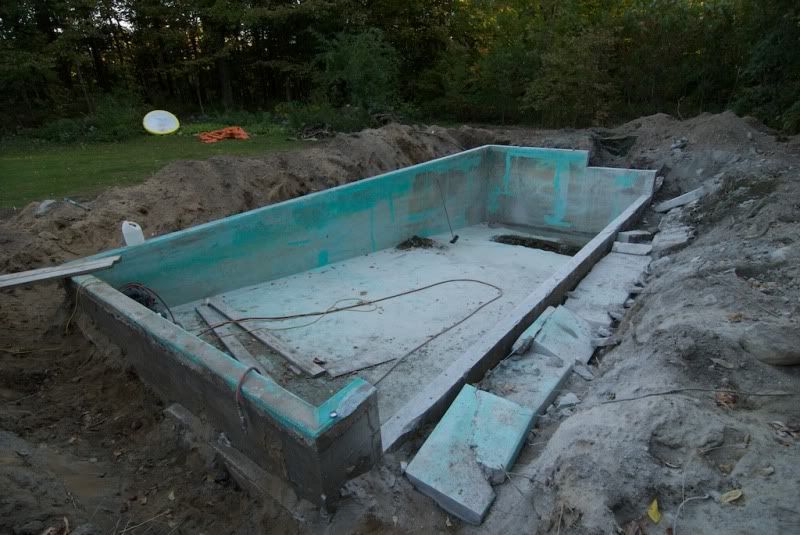- Aug 29, 2010
- 111
Hi.
So my wife and I decided that it was time for a swimming pool. When we had moved in, we noticed and were told that there was a buried inground cement pool in the back yard. They had filled it in with dirt and made a flower bed, but you were still able to see the border of pool which is and inch or two above ground. We didn't want to add an above ground pool beside it, so we decided that it was time to dig it up and have it removed and filled in properly.
Long story short, we dug out the pool and found it to be in pretty good shape. There is a crack down the side of one of the walls and a rectangular hole that they made in the bottom for drainage, but otherwise it's crack free. We had two pool guys come in and tell us that it's easily fixable and upgradable, for a price. I also decided to get a price from a company that does foundations for houses just to see how the price would differ.
Let me tell you, companies aren't too quick with their quotes. Three guys never even got back to me. So I guess I'll have to evaluate the job based on the two that did.
The foundation guy:
Easy quote: Cut out floor section and wall section 30' x 2', rebar, epoxy, form and pour new cement. $3000
This would mean that I would either need to re-use the current functional but rusty looking drain or seal the current drain and go drainless.
The pool guy:
Harder quote: Cut out floor section and wall section 30' x 2', rebar, epoxy, form and pour new cement. $4100
He would then water blast the pool at 5000lbs waterblast(which I find kind of low), add a new drain within the new cement hole, add a skimmer, a return and paint with two coats of rubber based paint.
$3000
For a total of $7100
I have at least 100 questions to ask, but I'll limit this post to the quotes.
-Do you think that the foundation guy(who was super nice, confident, professional) is a good choice for this project? or are there pool related issues to this that would require a pool reparation guy?
-5000 lbs water blast? will this clean all the paint off? It sounds more like the 4000lbs pressure washer that I can rent for $85 a day and do it myself.
- is it really that hard to add a skimmer? does it need to be poured in with the cement? The foundation guy only accounted for a rectangular cut out within his form. No support.
- is rubber paint the way to go? I've read a lot on this and I prefer to pay the extra for epoxy. I don't want to be repainting the pool every 2-3 years. I like the idea of 5-7. None of the companies here in Quebec seem to want to do it. One company told me it's because it's too hard to prep for the next time that painting comes around.
Anyhow, I don't want to scare anyone off at this point so I'll let it be for the moment. I've added some photos for entertainment value.
Enjoy!!
Thanks,
bruce






latest pic, sorry for the delay.
So my wife and I decided that it was time for a swimming pool. When we had moved in, we noticed and were told that there was a buried inground cement pool in the back yard. They had filled it in with dirt and made a flower bed, but you were still able to see the border of pool which is and inch or two above ground. We didn't want to add an above ground pool beside it, so we decided that it was time to dig it up and have it removed and filled in properly.
Long story short, we dug out the pool and found it to be in pretty good shape. There is a crack down the side of one of the walls and a rectangular hole that they made in the bottom for drainage, but otherwise it's crack free. We had two pool guys come in and tell us that it's easily fixable and upgradable, for a price. I also decided to get a price from a company that does foundations for houses just to see how the price would differ.
Let me tell you, companies aren't too quick with their quotes. Three guys never even got back to me. So I guess I'll have to evaluate the job based on the two that did.
The foundation guy:
Easy quote: Cut out floor section and wall section 30' x 2', rebar, epoxy, form and pour new cement. $3000
This would mean that I would either need to re-use the current functional but rusty looking drain or seal the current drain and go drainless.
The pool guy:
Harder quote: Cut out floor section and wall section 30' x 2', rebar, epoxy, form and pour new cement. $4100
He would then water blast the pool at 5000lbs waterblast(which I find kind of low), add a new drain within the new cement hole, add a skimmer, a return and paint with two coats of rubber based paint.
$3000
For a total of $7100
I have at least 100 questions to ask, but I'll limit this post to the quotes.
-Do you think that the foundation guy(who was super nice, confident, professional) is a good choice for this project? or are there pool related issues to this that would require a pool reparation guy?
-5000 lbs water blast? will this clean all the paint off? It sounds more like the 4000lbs pressure washer that I can rent for $85 a day and do it myself.
- is it really that hard to add a skimmer? does it need to be poured in with the cement? The foundation guy only accounted for a rectangular cut out within his form. No support.
- is rubber paint the way to go? I've read a lot on this and I prefer to pay the extra for epoxy. I don't want to be repainting the pool every 2-3 years. I like the idea of 5-7. None of the companies here in Quebec seem to want to do it. One company told me it's because it's too hard to prep for the next time that painting comes around.
Anyhow, I don't want to scare anyone off at this point so I'll let it be for the moment. I've added some photos for entertainment value.
Enjoy!!
Thanks,
bruce






latest pic, sorry for the delay.






